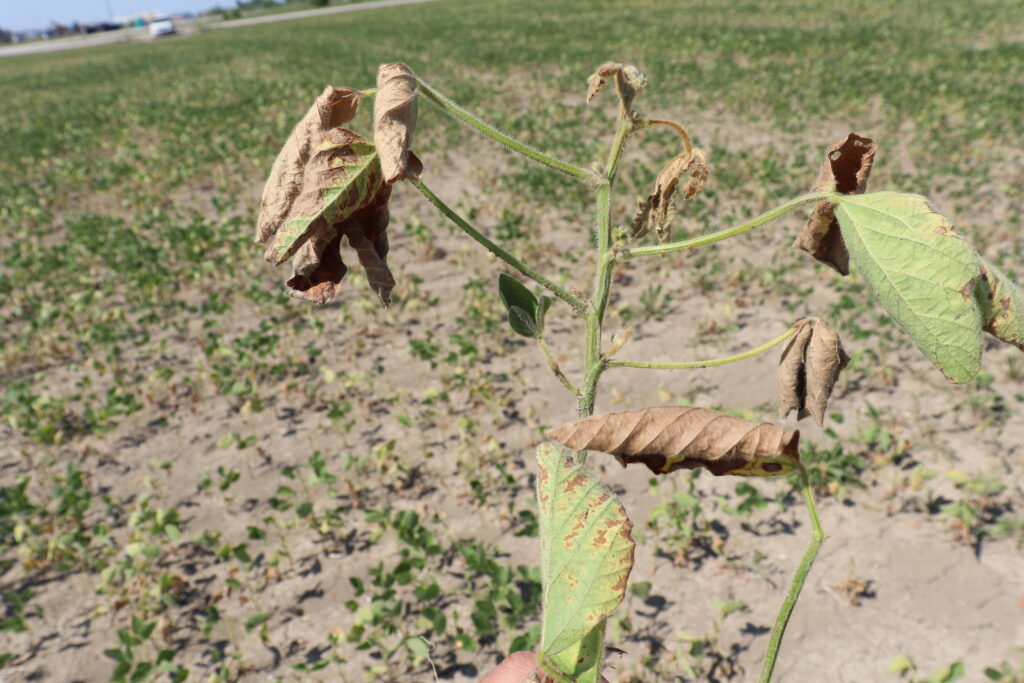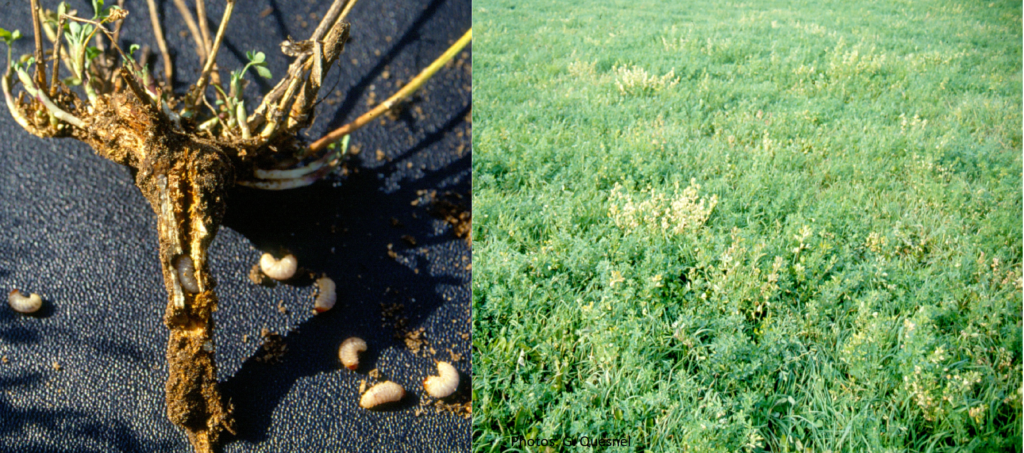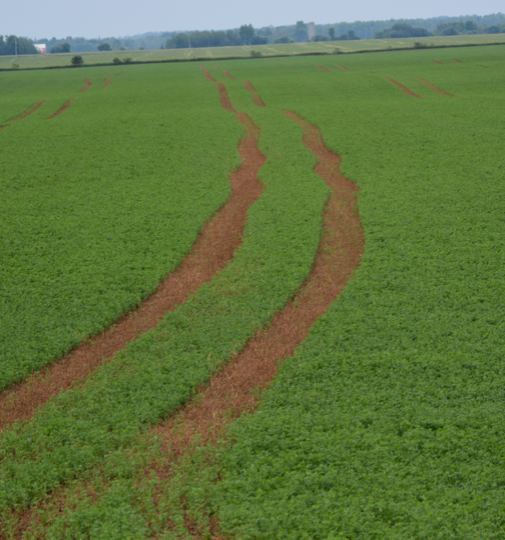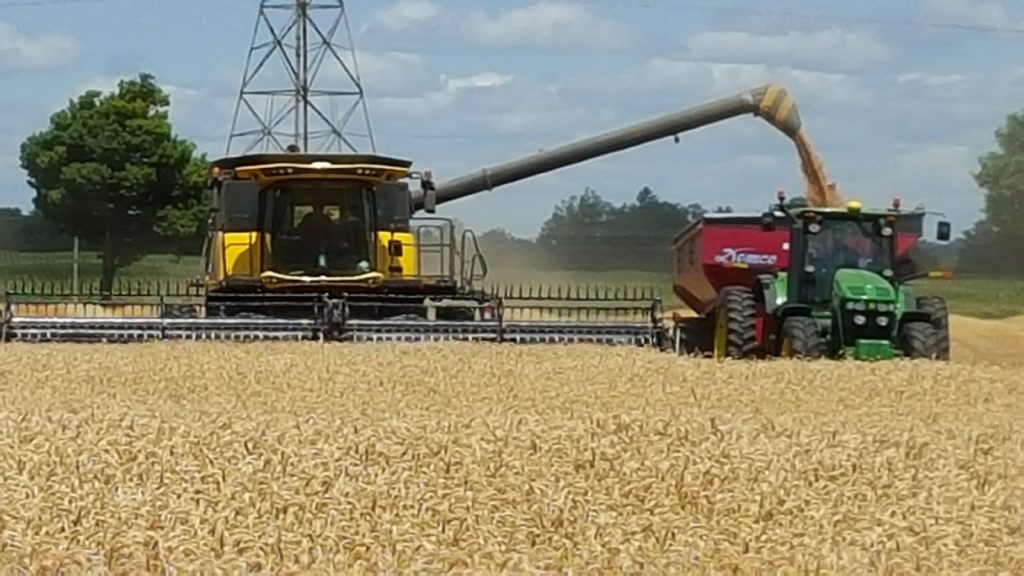Growth Stage 30, PGR Timing and More

The field season is well underway with much of the nitrogen on winter wheat, spring cereals being seeded and herbicide, fungicide and plant growth regulator (PGR) applications planned for the coming weeks. And yes, it is only April 16th! The early spring brought a lot of excitement to the wheat crop with the recent rains […]
Cobourg/Winchester Ag Breakfast Meeting – April 14, 2021

14 April 2021 at 8:00 AM Due to COVID-19 restrictions, agribusiness breakfast meetings will be paired and held virtually by video conference on the Zoom platform again in 2021. The first Cobourg/Winchester virtual ag breakfast meeting was held April 14th. Future meetings will be at two-week intervals (Apr 28, May 12, 26, Jun 9, 23). Weather Conditions Spring […]
Exeter + Mt Forest Ag Breakfast Meeting Minutes – April 13, 2021

The first Exeter + Mt Forest (Virtual) Ag Business Breakfast Meeting of the season was held on Tuesday April 13th at 8:00am. Cropping Conditions Spring has come early in Ontario. The growing degree days (GDDs) accumulated since March 1st for London total 260 compared to the 9-year average of 105. Similarly, GDDS in Goderich are […]
Alternative Forages to Silage Corn

Silage corn is grown to provide energy and fibre in a ration. It has very high yield potential. In addition to breaking corn rootworm lifecycles, alternatives to silage corn need to offer similar yield and nutritional value (Table 1). Producers should consult a livestock nutritionist to ensure rations are properly balanced. Table 1. Typical nutritional quality and […]
Agronomy Guide For Field Crops – Corn – Tillage

Tillage To successfully produce corn in Ontario, it is important to consider factors such as soil texture and crop rotation. Factors that will influence tillage options include risk of erosion, availability of equipment and labour and impact on soil health. Soils in Ontario are usually saturated in early spring, and quick dry-down is necessary to […]
2020 Soybean Seasonal Summary

2020 was an exceptional year for many Ontario soybean growers. Although not all regions had good yields, much of the province harvested outstanding soybeans. The overall provincial average will be one of the highest on record at 50.7 bu/ac. In several cases growers were able to achieve over 80 bu/ac. The 10-year average for those reported […]
2020 Forage Seasonal Summary

2019/2020 Winter Conditions Much of the province had a mild winter, with average amounts of precipitation. Areas of Chatham-Kent, Lambton, Huron, Grey, Bruce, Timiskaming, Cochrane, Rainy River, and Kenora received below-average winter precipitation. Forages broke dormancy early in much of the province, with green-up starting in mid-March in the southwest. Overall, reports of winterkill were […]
Getting to Know Your Knolls Part 2: Understanding and Managing Low pH Knolls

Ben Rosser, Corn Specialist, OMAFRA While high pH knolls tend to be more common in Ontario, often caused by soil erosion leaving higher pH calcareous subsoils, this is not the case for all regions. How do low pH knolls develop? Low pH knolls (Figure 1) can develop on undulating landscapes where surface soils formed from […]
OMAFRA Field Crop Report – September 10, 2020

Managing Eroded Knolls We’ve all seen them. Hilltops. Whitecaps. High spots where the crop struggles year after year. Eroded knolls are common to Ontario agriculture and cost farmers in lost productivity each season. This article is to explore knolls: how they’ve formed, how they differ, and how they can be managed or even re-mediated. How […]
August 2020 Forage Report

Photo: Many winter wheat fields were planted to an annual forage crop after harvest this year. Premiums for summer-seeded New Forage Seeding insurance are due to Agricorp September 15. Silage corn growers should check fields for rootworm resistance to Bt hybrids Scouting for corn rootworm injury in silage fields is important to detect potential resistance […]
2020 Ontario Virtual Diagnostic Days

This Ontario Virtual Diagnostic Days Series for 2020 will consist of eight 1-hour episodes occurring every two weeks starting Wednesday, July 15 through October 21, 2020. Each episode will highlight a general field crop agronomic theme. […]
Forage Options to Replace Silage Corn

Key Points: Rotating out of corn is the most effective way to reduce populations of Bt-resistant corn rootworm. To replace silage corn for 2021, establish fall rye or winter triticale immediately after 2020 silage corn harvest. After the cereal silage comes off in mid-May, establish sorghum-sudangrass and take two cuts. An energy source will need […]
Preparing for Seeding of Winter Canola

Winter canola acres in Ontario have been increasing since 2018. While research on the crop has been limited, some recommendations are outlined below based on experience with the crop in recent years and experience with spring canola in Ontario. Field Selection Fields should have good drainage and low clay content. Seeds may fail to emerge […]
OMAFRA Field Crop Report – July 9, 2020

The Ontario Virtual Crop Diagnostic Event will replace all in-person provincial crop diagnostic days that have been postponed this season due to the COVID-19 pandemic. The first series of diagnostic learning sessions begins on Wednesday July 15, 2020. For more information and to register go to OMAFRA Virtual Diagnostic Days Series website. While the management […]
Avoiding, Preparing For and Reacting to Harvest Fires

Wheat harvest 2020 is right around the corner! The conditions are dry in those fields! Once the rush starts it will be “all hands on deck” But remember the slew of harvest/field fires that occurred in July 2016/17/18 under similar dry conditions. Harvest fires result in a financial, emotional and environmental burden to the farm and risks the lives of farm personal, local fire departments and the public and uses firefighting resources. Make sure you are prepared before harvest begins! […]